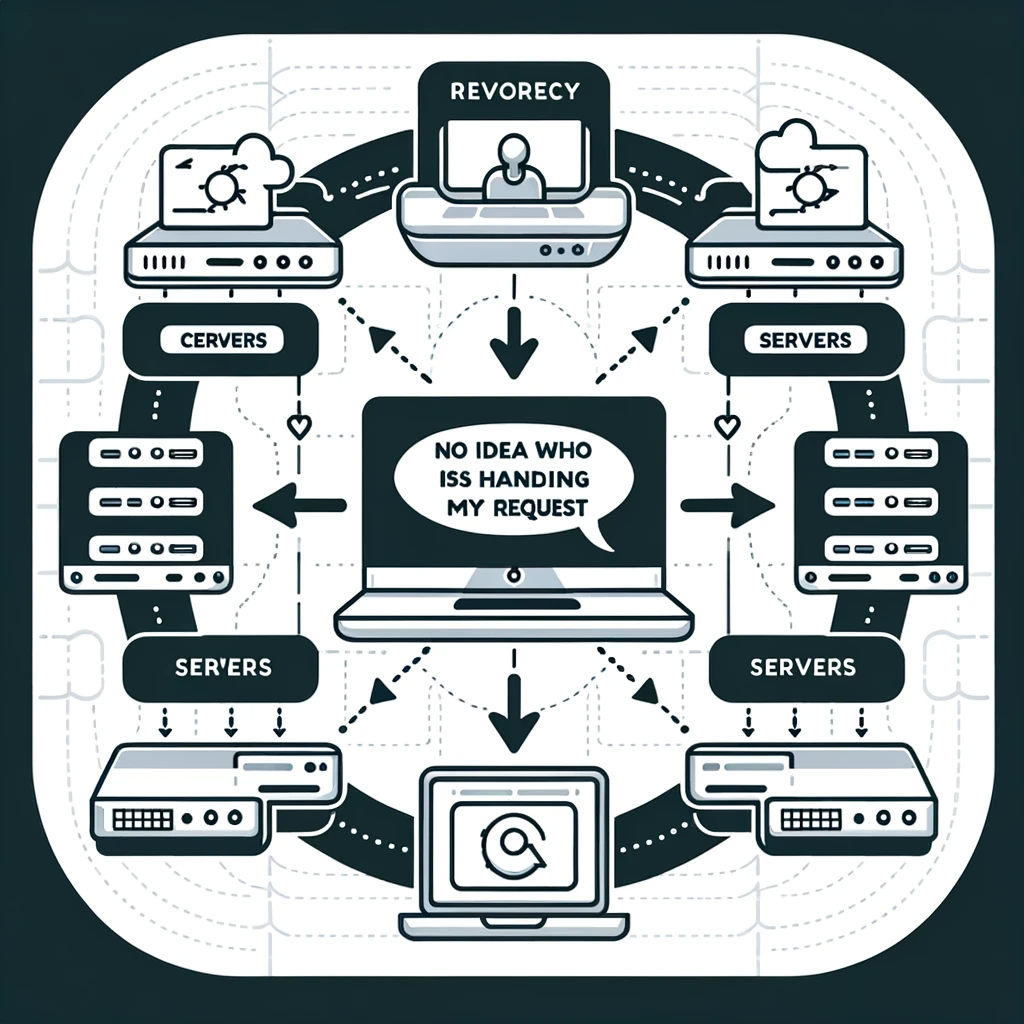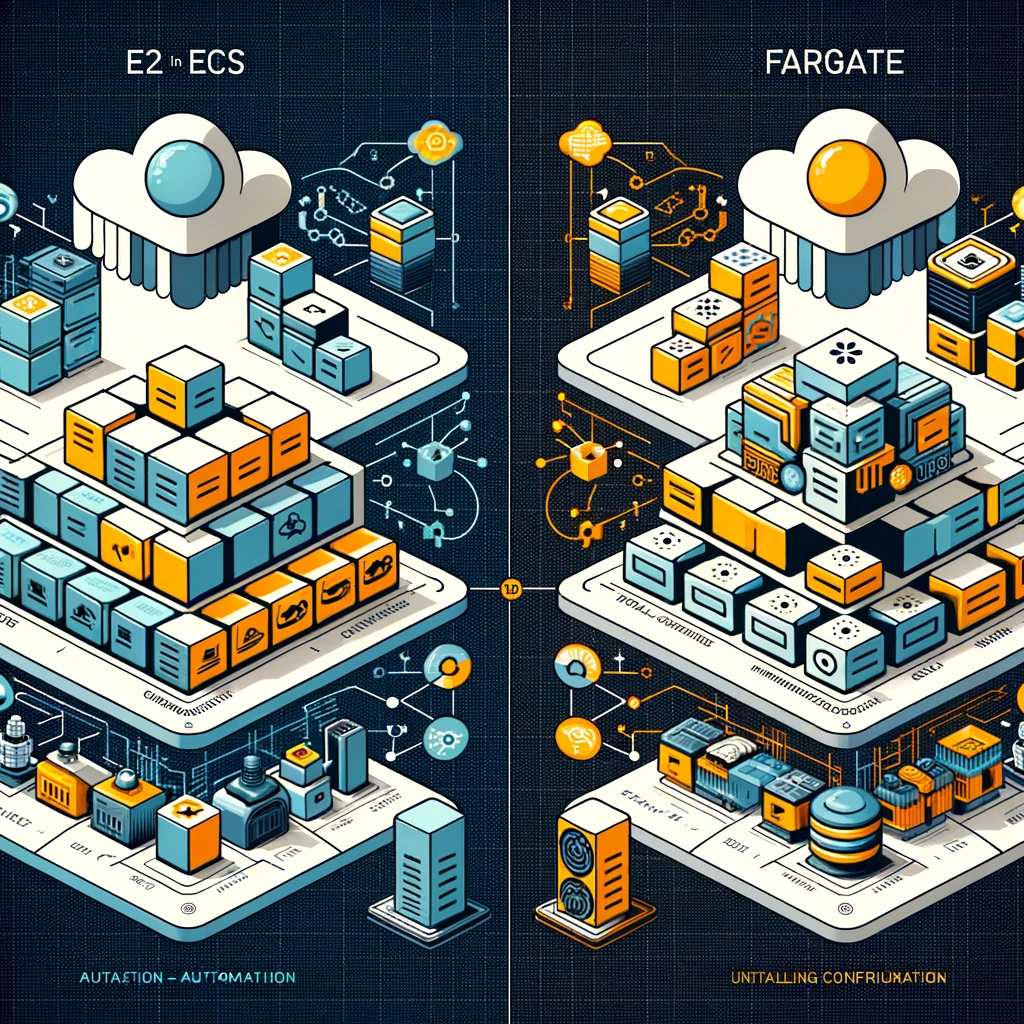In the intricate tapestry of cloud computing, AWS stands not merely as a collection of services, but as a symphony of solutions, each playing its unique part in harmonizing scalability with efficiency. Much like a masterful composer who blends notes to create a perfect melody, AWS offers a suite of compute services, each meticulously designed to address specific needs and challenges in the cloud. This article serves as a guided tour through the halls of AWS’s compute offerings, where we’ll explore the nuances and strengths of each service. From the robust and versatile EC2, reminiscent of the foundational bass notes in a symphony, to the agile and ephemeral Lambda, akin to the fleeting yet impactful piccolo, we’ll traverse the spectrum of AWS services. Our journey will illuminate the distinct characteristics of each, providing insights into their optimal use cases, and helping you orchestrate the perfect cloud solution for your unique requirements.
1. Amazon EC2: The Backbone of Customization
Amazon EC2 stands as a colossus in the realm of cloud computing, a foundational service that epitomizes the power and flexibility of AWS. Imagine a service that’s not just a part of the cloud, but a master key to an entire universe of computing possibilities. EC2 is this key, unlocking a world where customization and scalability converge in perfect harmony.
EC2 is akin to a vast, boundless virtual server room, where each server is a canvas awaiting your unique touch. Here, you have the autonomy to sculpt every facet of your computing environment, from selecting your desired instance types to configuring your operating systems and network settings. It’s a service that resonates with the spirit of a true craftsman, offering an array of tools and materials to construct a tailored, high-performance computing infrastructure.
But EC2’s prowess extends beyond mere customization. It embodies the essence of scalability and reliability in cloud computing. Whether you’re running a single virtual server or orchestrating a fleet of thousands, EC2 scales with an elegance and efficiency that’s almost poetic. It’s a service that not only responds to your current needs but anticipates and adapts to your future demands. In the grand tapestry of AWS services, EC2 is not just a thread; it’s the warp and weft that holds the fabric together. It’s the quintessential choice for a wide array of applications, from data-heavy analytics to resource-intensive gaming servers. EC2 doesn’t just offer a cloud environment; it offers a realm of infinite possibilities, a space where your applications can thrive and evolve.
- Abstraction: Low. EC2 demands a hands-on approach, giving you the power to select your instance types, operating systems, and more.
- Setup: Complex, but rewarding for those who need granular control.
- Reliability: High, with robust features like auto-scaling and instance replacement.
- Cost: Flexible pricing models, including on-demand and reserved instances.
- Maintenance: Requires more effort, as you manage both the software and the infrastructure.
2. Amazon ECS: Streamlining Container Management
Amazon ECS stands as a paragon of efficiency and elegance in the complex world of container orchestration. Imagine a service that’s not merely a tool, but a maestro, orchestrating a grand symphony of Docker containers. Each container, akin to a skilled musician, plays its part in a harmonious ensemble, contributing to the flawless execution of your applications.
ECS transforms the intricate dance of deploying and scaling containerized applications into a graceful and streamlined process. It’s akin to a masterful choreographer who ensures every performer – every container – is in the right place at the right time, performing optimally. This service is not just about managing containers; it’s about creating a seamless, cohesive environment where each component works in perfect unison.
With ECS, the complexities of container management are abstracted away, allowing you to focus on the higher-level aspects of your application. It’s like having a team of expert engineers at your disposal, each dedicated to a specific aspect of your container ecosystem. This level of orchestration ensures that your applications are not just running but thriving, with each container optimized for its role. In the narrative of AWS services, ECS is a chapter that speaks of innovation, efficiency, and harmony. It’s a service that understands the nuances of container orchestration and addresses them with sophistication and finesse that is rare in the world of cloud computing. ECS is more than a service; it’s a testament to the art of balancing complexity with elegance, ensuring that your containerized applications perform like a well-conducted orchestra.
- Abstraction: Medium. While ECS manages the orchestration, you still have some control over the underlying instances
- Setup: More straightforward than EC2, focusing on container deployment.
- Reliability: High, with ECS handling the health of your containers.
- Cost: Based on the EC2 instances or Fargate resources used.
- Maintenance: Easier than EC2, as ECS abstracts some of the infrastructure management.
3. AWS Fargate: The Serverless Container Experience
AWS Fargate stands as a revolutionary force in the realm of container management, redefining the experience of deploying and running applications. Imagine a world where the heavy lifting of server and cluster management vanishes, and all that’s left is the pure essence of creativity and innovation in application design and development. Fargate seamlessly integrates with both Amazon ECS and EKS, acting as a powerful, serverless compute engine that breathes life into your containers.
With Fargate, the complexities of scaling, patching, and securing servers become a thing of the past. It’s like having an invisible, yet omnipotent ally, taking care of all the underlying infrastructure, ensuring that your applications run in an optimized, highly available environment. This service is not just about running containers; it’s about empowering developers to build and deploy applications with unprecedented speed and agility, free from the constraints of traditional infrastructure management.
Fargate’s serverless nature means you only pay for the resources your applications actually use, making it a cost-effective solution that scales with your needs. It’s the embodiment of efficiency and flexibility in cloud computing, a game-changer for developers who want to focus on what they do best: creating remarkable applications.
- Abstraction: High. Fargate abstracts away the server and cluster management.
- Setup: Simplified, with an emphasis on defining tasks and services.
- Reliability: High, as AWS manages the underlying infrastructure.
- Cost: Pay-as-you-go, based on the resources allocated to your containers.
- Maintenance: Minimal, with AWS handling most of the operational aspects.
4. AWS Lambda: The Pinnacle of Serverless Computing
AWS Lambda is not just a service; it’s a paradigm shift in computing, epitomizing the essence of serverless architecture. Envision a world where infrastructure concerns dissolve into the cloud, leaving you with nothing but the pure, unadulterated joy of coding. Lambda enables you to run code for almost any type of application or backend service, all with zero administration. It’s like having a personal assistant who takes care of all the operational hassles, allowing you to focus solely on crafting your function’s logic.
Lambda is particularly adept at handling tasks that require quick execution, with a current limit of 15 minutes per execution. This constraint underscores Lambda’s role as a specialist in short-duration, high-efficiency tasks. It’s perfect for scenarios where you need to respond rapidly to events, process data in real-time, or automate various tasks within your cloud environment.
With Lambda, you’re not just deploying code; you’re weaving it into the very fabric of the cloud, creating responsive, dynamic applications that can scale automatically with demand. It’s a tool that redefines efficiency, allowing developers to focus on what they do best: building great applications.
- Abstraction: Very High. Focus solely on your code; AWS takes care of everything else.
- Setup: Minimal. Just upload your code and set the execution parameters.
- Reliability: Generally high, though cold starts can be a consideration.
- Cost: Highly efficient, with billing for actual compute time.
- Maintenance: Low, as AWS manages the compute fleet.
5. Amazon Lightsail: Effortless Application Deployment
Amazon Lightsail is the unsung hero of AWS, a beacon of simplicity in the often complex cloud landscape. Imagine a service that distills the power of AWS into a user-friendly package, making cloud computing accessible even to those at the beginning of their cloud journey. Lightsail is precisely that – a streamlined, no-fuss solution for launching and managing virtual private servers with just a few clicks.
Designed with simplicity and ease of use at its core, Lightsail is perfect for smaller applications, personal websites, or development environments. It’s like having a friendly guide in the world of cloud computing, offering a gentle introduction to AWS without overwhelming you with choices. With pre-configured plans, including everything from the virtual machine to storage and networking capabilities, Lightsail removes the complexity of cloud configuration.
But don’t let its simplicity fool you. Behind its user-friendly facade lies the robust power of AWS. Lightsail can seamlessly scale with your project, offering a smooth transition to more advanced AWS services as your needs evolve. It’s an ideal starting point for those looking to dip their toes into cloud computing without diving headfirst into the more intricate AWS offerings.
In essence, Lightsail is more than just a service; it’s a gateway to the cloud for the uninitiated, a stepping stone for those seeking to build and grow in the AWS ecosystem. It embodies the spirit of cloud computing, democratizing access to powerful resources and enabling a wider audience to harness the potential of the cloud.
- Abstraction: Medium. Lightsail offers a more streamlined experience than EC2.
- Setup: Very user-friendly, with pre-configured templates.
- Reliability: Good, but be mindful of resource limits.
- Cost: Predictable, with straightforward pricing.
- Maintenance: Lower than EC2, with some automated management features.
6. AWS Elastic Beanstalk: Developer-Friendly App Deployment
AWS Elastic Beanstalk stands as a testament to AWS’s commitment to simplifying the developer experience. Imagine a service that acts not just as a platform but as a partner in your application deployment journey. Elastic Beanstalk is this and more, offering a seamless path to deploying and scaling web applications and services with the finesse of a seasoned craftsman.
This service is akin to a skilled architect and builder rolled into one. It takes the complex, often tedious tasks of capacity provisioning, load balancing, auto-scaling, and application health monitoring, and transforms them into a streamlined, almost magical process. With Elastic Beanstalk, you’re not bogged down by the minutiae of infrastructure management; instead, you’re free to focus on what you do best: crafting remarkable applications.
Elastic Beanstalk is particularly adept at catering to developers who seek efficiency without sacrificing control. It provides a perfect blend of automation and customization, allowing you to dictate the specifics of your application environment while it handles the heavy lifting of resource management. This service is not just about deploying applications; it’s about empowering developers to bring their visions to life with speed, agility, and confidence.
In the grand narrative of AWS services, Elastic Beanstalk is a chapter that resonates with both novice and experienced developers alike. It’s a bridge between the realms of high-level application development and intricate cloud infrastructure, a tool that demystifies AWS deployment without stripping away the power and flexibility that developers crave.
- Abstraction: Medium. Offers more control than fully serverless options.
- Setup: Simple, with Beanstalk handling much of the resource management.
- Reliability: High, with AWS managing application scaling and health.
- Cost: Pay only for the resources used without additional charges.
- Maintenance: Less demanding, as AWS takes care of the underlying resources.
7. AWS App Runner: Seamless Container Orchestration
AWS App Runner emerges as the latest jewel in the crown of AWS’s compute services, a shining example of innovation and ease in the world of container orchestration. Picture a service that not only simplifies but revolutionizes the way developers deploy containerized web applications and APIs. App Runner is this revolutionary force, designed to streamline the deployment process to a degree previously unimagined.
In the spirit of a true innovator, App Runner eliminates the complexities traditionally associated with container deployment. It’s as if you have a team of expert engineers handling all the intricate details of infrastructure management, allowing you to concentrate solely on the essence of your application. This service is not just about deploying containers; it’s about redefining the deployment experience, making it as effortless as a gentle breeze.
App Runner stands out for its ability to abstract the underlying infrastructure to a level where it becomes almost invisible to the developer. This abstraction is not just a feature; it’s a paradigm shift, enabling developers to deploy their applications with unprecedented speed and simplicity. It’s particularly adept at catering to the needs of modern web applications and APIs, ensuring they are not just deployed but are thriving in an optimized, fully managed environment. In the grand narrative of AWS services, AWS App Runner is like the final piece of a puzzle, completing the picture of a comprehensive, developer-friendly compute ecosystem. It’s a testament to AWS’s ongoing commitment to innovation, a service that not only adds to the AWS portfolio but elevates it, offering a glimpse into the future of cloud computing.
- Abstraction: High. Focus on your application, and let AWS handle the rest.
- Setup: Very straightforward, with a focus on application requirements.
- Reliability: Excellent, with AWS managing deployment and scaling.
- Cost: Slightly higher, but with the benefit of a fully managed environment.
- Maintenance: Minimal, as AWS takes care of the operational aspects.
Finding Your Perfect AWS Compute Match: Practical Scenarios for Each Service
In the AWS universe, each compute service shines in its unique scenario. Let’s explore how each of these services fits into different needs and contexts, helping you to identify which one is the most suitable for your specific project or situation.
Amazon EC2: Ideal for Detailed Control and Flexibility
If you’re developing a complex application that requires specific server configurations, such as a large-scale database or a high-performance computing application, EC2 is your go-to choice. Its flexibility in configurations and scalability makes it perfect for applications where control over the environment is paramount.
Amazon ECS: Streamlining Containerized Applications
For applications that rely on Docker containers, ECS is the optimal choice. It’s particularly beneficial when you need to manage a cluster of containers but want to avoid the complexity of handling the underlying infrastructure. Think of microservices architectures where you need to scale different parts of your application independently.
AWS Fargate: Effortless Container Management
Fargate is ideal for businesses that want to leverage containerization without the overhead of managing servers or clusters. It’s perfect for smaller teams or startups looking to deploy containerized applications quickly and efficiently, without the need for deep infrastructure expertise.
AWS Lambda: The Epitome of Serverless
Lambda is best suited for event-driven architectures, such as automated file processing in response to uploads in S3, or for applications that experience variable traffic and need to scale automatically. It’s also great for microservices that need to be independently scalable and cost-effective.
Amazon Lightsail: Simplicity for Smaller Projects
Lightsail is the ideal choice for smaller projects, personal websites, or for those just starting with cloud computing. Its simplicity and low-cost model make it perfect for users who need a straightforward, manageable solution without a steep learning curve.
AWS Elastic Beanstalk: Easy Deployment with Control
Elastic Beanstalk fits well for developers who want to deploy web applications without the complexity of managing the infrastructure but still need some level of control. It’s great for applications where you want AWS to handle the scaling and deployment but need to customize the environment.
AWS App Runner: Seamless Container Orchestration
App Runner is excellent for developers who want to quickly deploy containerized web applications and APIs without dealing with the underlying infrastructure. It’s ideal for small to medium-sized applications or startups that prioritize ease of use and quick deployment over granular control.
Each AWS compute service offers unique advantages tailored to specific types of applications and business needs. By understanding these scenarios, you can make an informed decision about which service aligns best with your project’s requirements, balancing factors like control, ease of use, scalability, and cost.











